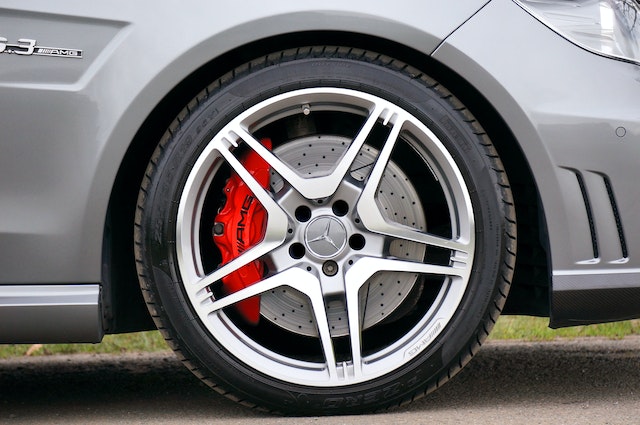
Imagine setting off on a road trip with the perfect playlist, your favorite snacks, and the open road ahead. Suddenly, you realize that your car isn’t driving quite right. The culprit? Often, it’s those round rubber wonders we sometimes take for granted: our tires. Just as we wouldn’t embark on a mountain hike with worn-out shoes, our cars rely on sturdy, well-maintained tires to take us on our adventures.
Wear and tear is natural, but knowing how to spot and address these issues is crucial. Just as we’d care for a blister from a new pair of shoes, we need to tend to our tires. Ready to become a tire-care pro? Let’s dive into the world of common tire-wearing issues and how to tackle them!
1. The Telltale Signs
Ever noticed your car pulling to one side? Or maybe you’ve felt a strange vibration while driving? These could be signs that your tires need some attention. Often, these issues arise from uneven tire wear or misalignment.
Regular tire inspection by a mechanic can help you catch this problem early. By addressing these signs promptly, you can prevent further damage and ensure a safer drive.
2. Feathering: A Sneaky Culprit
You might wonder, “what causes tire feathering?” Feathering is when the edge of each tread rib develops a slightly rounded edge on one side and a sharp edge on the other. This peculiar wear pattern can be caused by issues like incorrect toe settings or worn-out suspension components. If left unchecked, feathering can lead to decreased tire life and compromised handling.
Regular alignments can prevent this sneaky issue. If you notice this pattern, it’s wise to visit a mechanic to get a comprehensive check-up and solution.
3. Center Wear
If the middle of your tire looks more worn than the edges, it’s often due to over-inflation. When there’s too much air, the tire bulges out in the center, causing it to bear the brunt of the road. This not only wears out the tire’s middle faster but can also reduce traction, making driving riskier.
Check your tire’s air pressure against the manufacturer’s recommendation. Adjusting the pressure can solve this problem in a jiffy.
4. Edge Wear
When the outer edges of your tire wear out faster than the center, it’s usually under-inflation at play. Under-inflated tires spread out more on the sides, causing those edges to rub against the road more aggressively.
A quick pressure check and adjustment can get things back on track. For the best results and to ensure longevity, always inflate your tires to the recommended pressure found in your car’s manual or on the sticker inside the driver’s door. If edge wear persists, consulting with a tire expert can provide further insights and solutions.
5. Patchy Wear: The Random Spots
Seeing random patches of wear on your tires? It might be time to get them balanced. Unbalanced tires can wear out unevenly, often because one section of the tire bears more weight and hits the road harder. This can stem from everyday driving, hitting curbs, or even from manufacturing inconsistencies. Over time, this uneven wear can lead to vibrations while driving and reduced overall tire life.
Your local mechanic can help with this by adjusting the weight distribution around the tire, ensuring a smoother ride. Regularly checking for patchy wear and addressing it promptly can save you money in the long run and keep your drives comfortable and safe.
6. Cupping: Dips and Dents
Cupping, or scalloping, is when you find dips and dents in your tire tread. This unusual wear pattern often points to worn or damaged suspension components. When shocks or struts aren’t functioning correctly, the tire can bounce on the road, leading to these cup-like patterns. Another cause can be misaligned wheels, which force the tires to move in ways they aren’t designed to. It’s often a sign that your car needs new shocks or struts.
Addressing this early can save your tires and ensure a smoother ride. If you notice cupping on your tires, it’s essential to get your suspension and alignment checked.
7. Sidewall Cracks: Not Just a Tread Issue
Don’t just focus on the tread. Check the sidewalls too! Cracks here can be a sign of aging tires or exposure to harsh elements like extreme temperatures or harmful chemicals. Over time, the rubber in tires loses its flexibility and starts to crack, especially if they’re frequently parked in direct sunlight or in areas with ozone pollution. Additionally, using cleaning agents not designed for tires can accelerate this deterioration.
If you spot these cracks, consider getting new tires to ensure safety on the road. Regularly cleaning your tires with appropriate products and parking in shaded areas can help prolong their life and keep sidewall cracks at bay.
Recap: Solutions and Prevention
Here is a quick recap of some quick tips:
- Rotate your tires regularly.
- Get your car aligned if you hit a pothole or curb.
- Check the air pressure monthly.
- Avoid sudden stops and starts.
Conclusion
Tires are the most crucial part of the vehicle that keeps us safe and smooth on the road. Just like we wouldn’t ignore a worn-out heel on our go-to sneakers, we shouldn’t neglect our tires. Spot those little issues before they grow, and you’ll not only drive safer but also save some cash. So, give those tires the love they deserve, and they’ll keep rolling strong for many adventures ahead!